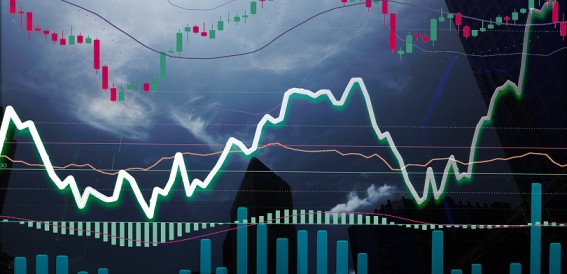The Sensex, also known as the S&P BSE Sensex, is the benchmark index of the Indian stock market. It is a key indicator of the health and performance of the Indian economy and is closely watched by investors, analysts, and policymakers alike.
However, many people may not be aware of the intricacies behind the calculation of the Sensex. This post will discuss the methodology and components used to calculate the Sensex, providing a comprehensive understanding of this vital index.
Topics Covered:
- What is Sensex?
- How is Sensex Calculated?
- How To Invest in Sensex?
- Milestones of Sensex India
- Conclusion
What is Sensex?
The Sensex, short for the Sensitive Index, is a stock market index that serves as a benchmark for the performance of the Indian stock market. It is managed and calculated by the Bombay Stock Exchange (BSE), one of Asia’s oldest stock exchanges. The Sensex comprises a weighted average of the stock prices of 30 of the largest and most actively traded companies listed on the BSE.
The term “Sensex” was coined from the words “Sensitive” and “Index” and reflects its purpose of gauging the overall market sentiment and economic health of the Indian stock market. It was first calculated in 1986 and has become one of the most important indicators of the Indian financial markets.
The Sensex plays a significant role in the Indian stock market by providing investors, traders, and analysts with a broad overview of the market performance. It serves as a barometer for measuring the direction and volatility of the market, influencing investment decisions and market strategies.
The movement of the Sensex is closely watched and analyzed by market participants. It is often seen as a reflection of the overall trends and sentiments in the Indian economy.
Additionally Read About: What is Demat Account?
Begin your investing journey today. Your Demat account is the first step.
How is Sensex Calculated?
The calculation of the Sensex involves several key factors, including the selection of stocks, the use of the free-float market capitalisation method, and a specific formula. Here is an answer to the question – how is Sensex calculated
Selection of Stocks
- The Sensex consists of 30 stocks representing various sectors of the Indian economy.
- These stocks are selected based on predefined criteria such as liquidity, market capitalisation, and trading frequency.
- The stocks included in the Sensex are considered to be representative of the overall market performance.
Free-Float Market Capitalisation Method
- The Sensex calculation employs the free-float market capitalisation method, which considers only the shares available for trading.
- It excludes shares held by promoters, governments, and other strategic investors that are not readily available for trading.
- The free-float market capitalisation method provides a more accurate reflection of the market value of a company, as it considers only the shares that are actively traded.
Formula
- The Sensex is calculated using a weighted average market capitalisation formula.
- The market capitalisation of each stock in the index is multiplied by a predetermined weightage factor.
- The weightage factor is based on the free-float market capitalisation of the stock and its sectoral representation.
- The sum of the stocks’ weighted market capitalisations is divided by a scaling factor to arrive at the Sensex value.
The Sensex is calculated using the following formula:
Sensex = Free float market capitalisation of 30 companies / Base market capitalisation * Base value of the index
Criteria for a Stock to be included in the Sensex
- The stock must be among the top companies listed on the Bombay Stock Exchange in terms of market capitalisation and trading volume.
- The stock should have a good track record of financial performance and adherence to corporate governance practices.
- It should represent a sector that is considered vital to the Indian economy.
- The stock should have a good liquidity profile, ensuring ease of trading.
How To Invest in Sensex?
Investing in the Sensex can be a strategic move for individuals looking to capitalize on the growth potential of the Indian stock market. There are several ways to invest in the Sensex, each with advantages and considerations. Here are three popular methods:
-
Index Funds
- Index funds are mutual funds that aim to replicate the performance of a specific index, such as the Sensex.
- By investing in an index fund, you gain exposure to all the stocks in the Sensex in proportion to their weightage.
- Index funds offer diversification and are a passive investment option, making them suitable for long-term investors.
-
Exchange-Traded Funds (ETFs)
- ETFs are similar to index funds but trade on stock exchanges like individual stocks.
- Investing in an
exchange-traded fund
that tracks the Sensex allows you to buy and sell shares throughout the trading day at market prices.
- ETFs are cost-effective, highly liquid, and provide instant diversification to Sensex constituents.
-
Direct Stock Investment
- Investing directly in Sensex stocks requires a more hands-on approach.
- It involves buying and holding shares of individual companies that comprise the Sensex.
- This method allows for greater control and the potential for higher returns but requires thorough research and market knowledge.
Understanding Sensex movements is essential for making informed investment decisions. Factors such as economic indicators, corporate earnings, and global market trends can impact the Sensex. Regular monitoring and analysis of the index can help investors identify opportunities and manage risk effectively.
Milestones of Sensex India
Since its inception in 1986, the Sensex has witnessed several significant milestones, reflecting the ups and downs of the Indian stock market. One of the notable milestones occurred on April 4, 1979, when the Sensex crossed the 1000-point mark for the first time. This demonstrated the growing strength and potential of the Indian economy.
Another significant milestone was reached on January 8, 2008, when the Sensex hit its all-time high of 21,206 points. This record high resulted from strong investor confidence and favorable market conditions. However, the market also experienced challenging times, such as during the global financial crisis in 2008. On October 24, 2008, the Sensex witnessed its largest single-day fall, losing over 1,070 points.
In recent years, the Sensex has continued to reach new milestones. On February 2, 2021, it crossed the 50,000-point mark, demonstrating the resilience and growth of the Indian stock market despite the ongoing pandemic.
These milestones in Sensex’s history showcase the market’s dynamic nature and serve as a reminder of the potential gains and risks associated with investing. It is essential for investors to closely monitor market trends and historical events to make informed investment decisions.
Recommended Read: What affects the stock market
Conclusion
Learn about the calculation of Sensex and elevate your market understanding. Initiate online demat account setup now to dive into the world of stock market analysis with confidence.
By clearly understanding how the Sensex is calculated and its components, investors can gain insights into the market’s overall performance and identify potential trends. This knowledge empowers investors to make well-informed decisions, mitigate risks, and maximize returns.










